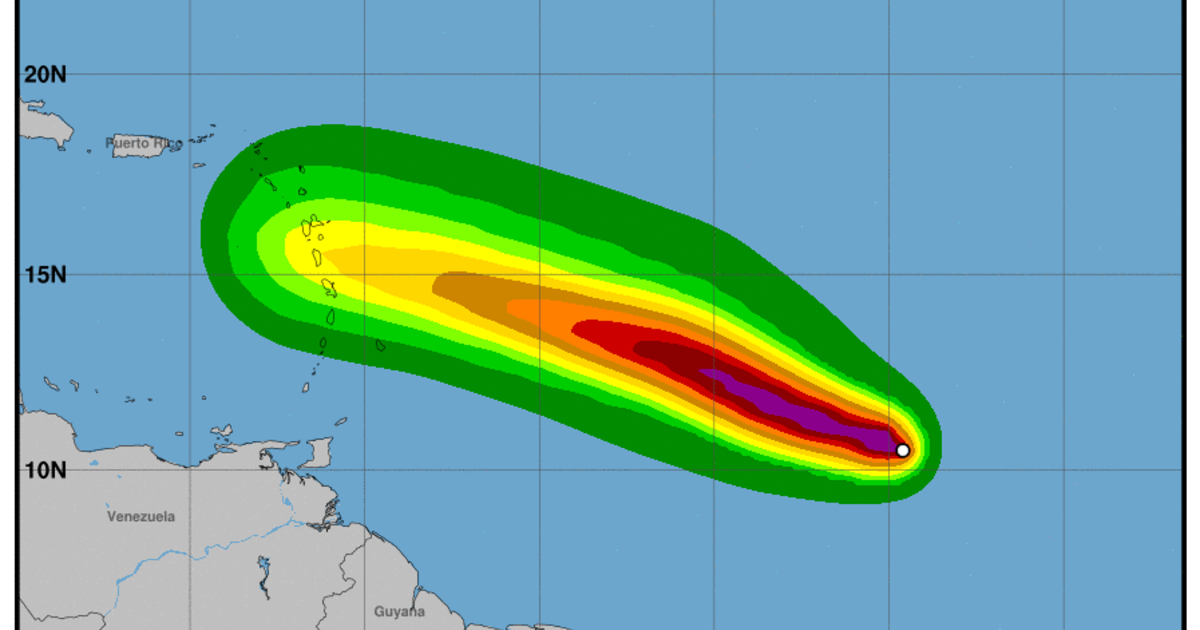Hurricane Beryl’s Path: Historical Perspective

Path of hurricane beryl – Hurricane Beryl has left an indelible mark on the Atlantic coastline, with a history of landfalls and impacts spanning several decades. Its track record reveals patterns of movement, frequency, and intensity, offering insights into its behavior and potential risks to coastal communities.
As Hurricane Beryl swirls through the Atlantic, forecasters are closely monitoring its path using a variety of tools, including spaghetti models. These models simulate the storm’s potential tracks, helping meteorologists predict where it may go. By analyzing the spaghetti models, experts can better understand the range of possible paths and make informed decisions about evacuation and preparation.
Beryl’s path has primarily affected the southeastern United States, with notable landfalls in Florida, Georgia, and South Carolina. The hurricane’s intensity has varied, ranging from Category 1 to Category 3 on the Saffir-Simpson Hurricane Wind Scale. However, even at lower intensities, Beryl has brought significant rainfall, flooding, and storm surge, causing widespread damage and disruption.
Hurricane Beryl, a Category 1 storm, continues its westward path towards the Lesser Antilles. As of now, it is expected to pass near or over Barbados, bringing heavy rainfall and potential flooding. For the latest updates on Hurricane Beryl and its impact on Barbados, visit barbados hurricane beryl.
Stay tuned for further updates on the path of Hurricane Beryl.
Notable Landfalls
Some of the most notable landfalls of Hurricane Beryl include:
- 1994: Beryl made landfall near Daytona Beach, Florida, as a Category 2 hurricane, bringing high winds, heavy rainfall, and coastal flooding.
- 2000: Beryl made landfall near St. Augustine, Florida, as a Category 1 hurricane, causing extensive damage due to flooding and storm surge.
- 2006: Beryl made landfall near Sapelo Island, Georgia, as a Category 1 hurricane, bringing heavy rainfall and flooding to coastal areas.
Predicting Beryl’s Trajectory

Predicting the path of a hurricane is a complex task that requires meteorologists to consider a variety of factors. These factors include atmospheric conditions, ocean currents, and wind patterns.
Atmospheric Conditions
The atmosphere is a complex system that is constantly changing. The temperature, pressure, and humidity of the atmosphere can all affect the path of a hurricane. Hurricanes tend to form in areas where the atmosphere is warm and moist. The warm air provides the energy that fuels the hurricane, while the moisture provides the water vapor that condenses to form clouds and rain.
Ocean Currents
Ocean currents can also affect the path of a hurricane. Hurricanes tend to follow the path of the ocean currents. The warm waters of the Gulf Stream, for example, can help to fuel hurricanes that form in the Atlantic Ocean.
Wind Patterns
Wind patterns can also affect the path of a hurricane. Hurricanes tend to move in the direction of the prevailing winds. The prevailing winds in the Atlantic Ocean are the trade winds, which blow from east to west. This means that hurricanes in the Atlantic Ocean typically move from east to west.
Forecasting Models
Meteorologists use a variety of forecasting models to predict the path of hurricanes. These models take into account the atmospheric conditions, ocean currents, and wind patterns. The models are constantly being updated with new data, which helps to improve their accuracy.
The accuracy of forecasting models has improved significantly in recent years. However, it is still not possible to predict the exact path of a hurricane with complete certainty. This is because the atmosphere is a complex system that is constantly changing.
Impact Assessment: Path Of Hurricane Beryl

The projected path of Hurricane Beryl poses a significant threat to coastal communities, warranting a comprehensive assessment of their vulnerability and the implementation of robust mitigation strategies. This assessment involves analyzing factors such as population density, critical infrastructure, and the presence of natural barriers, to identify areas at high risk of damage and develop targeted mitigation measures.
Coastal Vulnerability Assessment
- Population Density: Coastal areas with high population densities are more vulnerable to the impacts of hurricanes due to the concentration of people and property in a relatively small area. This can lead to overcrowding during evacuations and increased risk of casualties in the event of a direct hit.
- Critical Infrastructure: The presence of critical infrastructure, such as power plants, hospitals, and transportation hubs, in coastal areas exacerbates vulnerability. Damage to these facilities can disrupt essential services, hinder emergency response efforts, and prolong recovery time.
- Natural Barriers: Natural barriers, such as mangroves, coral reefs, and sand dunes, play a crucial role in mitigating the impacts of hurricanes by absorbing wave energy, reducing storm surge, and stabilizing coastlines. Preserving and restoring these ecosystems is vital for coastal protection.
Mitigation Strategies, Path of hurricane beryl
- Evacuation Plans: Well-developed and regularly updated evacuation plans are essential for minimizing the loss of life during a hurricane. These plans should clearly Artikel evacuation routes, designated shelters, and procedures for vulnerable populations.
- Coastal Protection Measures: Structural measures, such as seawalls, breakwaters, and levees, can be effective in reducing storm surge and protecting coastal communities. However, these measures can be costly and may have environmental impacts, so careful consideration and planning are necessary.
- Non-Structural Measures: Non-structural measures, such as land-use planning and building codes, can also play a significant role in mitigating hurricane impacts. Restricting development in high-risk areas, enforcing building codes that require hurricane-resistant construction, and implementing flood insurance programs can reduce the vulnerability of coastal communities.